Art World
Nepal’s Historic Cultural Landmarks Wiped Out in 7.8 Magnitude Earthquake
80 percent of the temples in Kathmandu are believed to have been damaged.
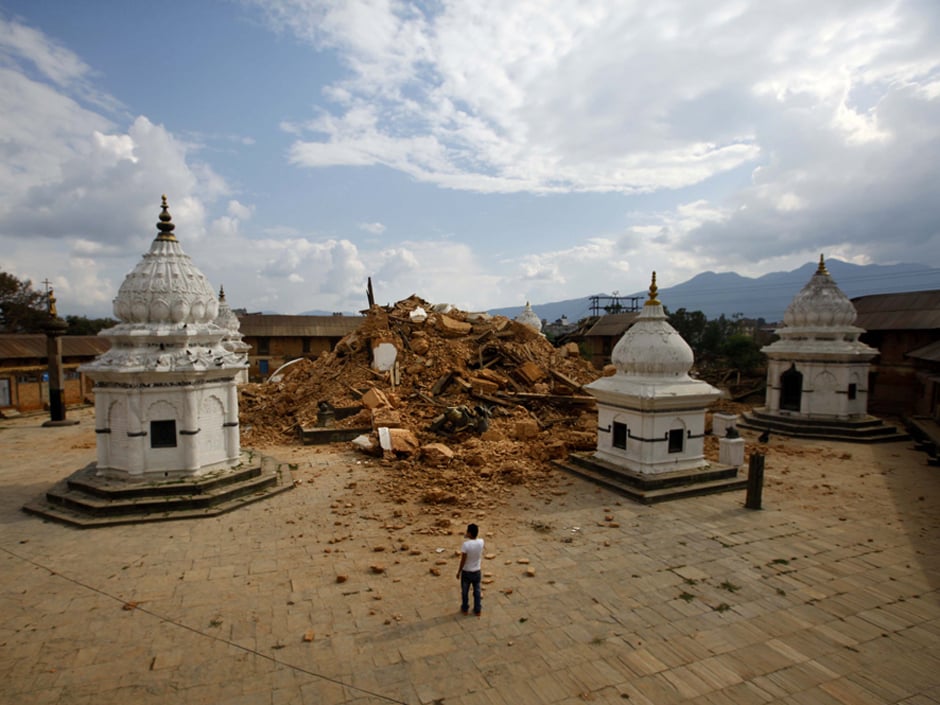
80 percent of the temples in Kathmandu are believed to have been damaged.

Sarah Cascone

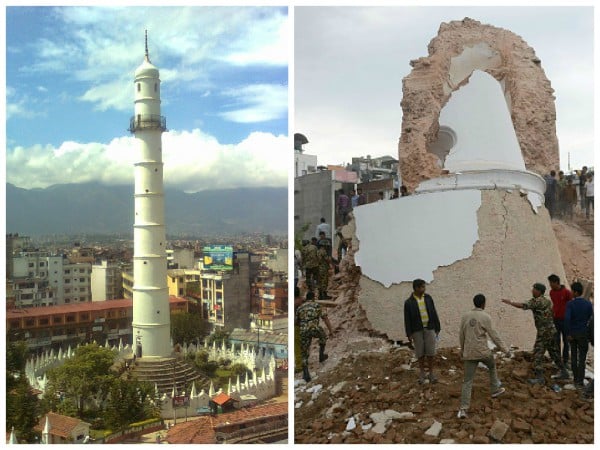
The Dharahara in Kathmandu before and after the earthquake.
Photo via: the Times of India.
Many of Nepal’s historic cultural landmarks were severely damaged or destroyed in Saturday’s devastating 7.8 magnitude earthquake. Over 3,600 people are now believed to be dead, including tourists who were crushed by the ruins of temples and statues in Kathmandu’s Durbar Square, recognized by UNESCO as a World Heritage Site.
The square was mainly built between the 12th and 18th centuries, but the oldest sections date back to the 5th century. Until the 19th century, the square was home to Nepal’s royal family. An estimated 80 percent of temples located there are believed to have been damaged during the disaster.
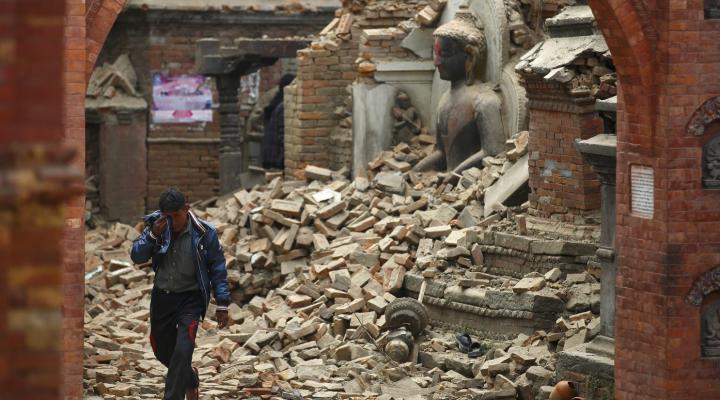
A man cries amid the rubble in Bhaktapur, near Kathmandu, Nepal, following the devastating earthquake.
Photo: Niranjan Shrestha, courtesy AP Photo.
The Dharahara, a 200-foot-tall tower built in 1832, was among the historic structures that collapsed during the quake. The military watch tower-turned tourist attraction offered stunning views of the Kathmandu Valley.
“I had just bought tickets to climb the tower and was at its base when I felt a sudden shaking,” survivor Dharmu Subedi told AFP from a Kathmandu hospital bed. “Within minutes, the Dharahara had crumbled to the ground with maybe more than 100 people in it.”

A destroyed temple in Kathmandu, Nepal, following the devastating earthquake.
Photo: Niranjan Shrestha, courtesy AP Photo.
The New York Times reports that 180 bodies were recovered from the site. The Dharahara had survived two previous quakes, in 1834 and 1934, which seriously damaged and then destroyed a sister tower.
Kathmadu’s Durbar Square is just one of four UNESCO World Heritage Sites in the Kathmadu Valley to have been damaged by the most recent quake.
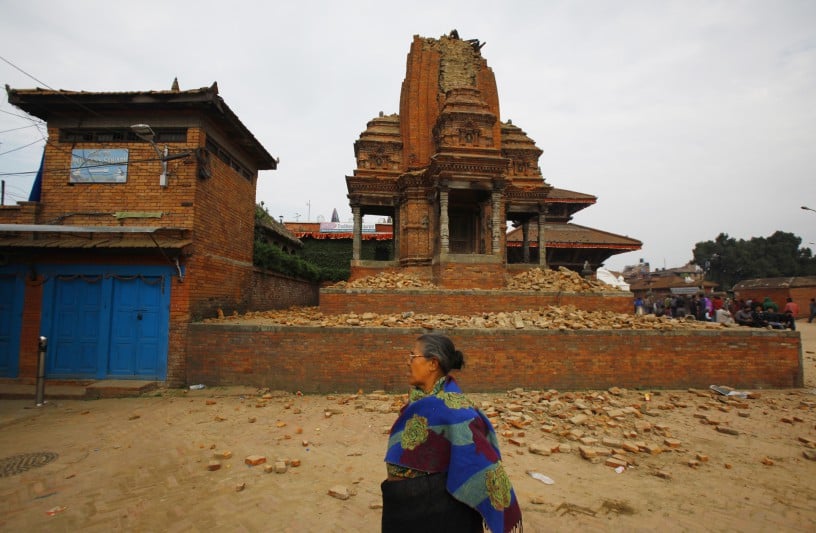
A woman passes a partially collapsed temple in Bhaktapur, near Kathmandu, Nepal, following the devastating earthquake.
Photo: Niranjan Shrestha, courtesy AP Photo.
At Bhaktapur Durbar Square, a conch shell–shaped temple complex, the roof of the central temple has caved in. Two temples in Patan Durbar Square, which dates to the third century, have completely collapsed. Damage has also been sustained at one of the Himalaya’s oldest Buddhist monuments, the Boudhanath Stupa.
The devastation brings to mind cultural losses in the Middle East at the hands of ISIS (see Baghdad’s National Museum of Iraq Re-Opens In Response to ISIS’s Destruction of Statues in Mosul and UNESCO Chief Decries ISIS “Cultural Cleansing” in Erbil Speech).
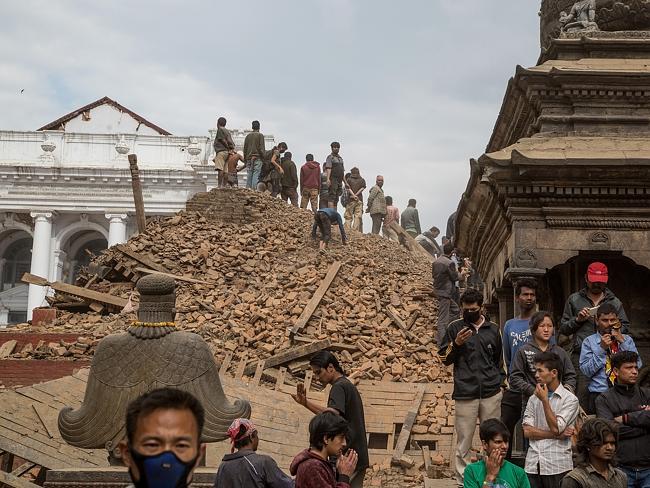
A collapsed temple in Basantapur Durbar Square, Kathmandu, Nepal, following the earthquake.
Photo: Getty Images
“It’s an irreparable loss for Nepal and the rest of the world,” P.D. Balaji, the history and archaeology department head at India’s University of Madras, told AFP. “Complete restoration is not possible on account of the extensive damage to the historical sites in Nepal.”